There are 3 million Afar people spread across 3 countries in the Horn of Africa: Ethiopia, Eritrea and Djibouti.
In the northeast of Ethiopia, in the area of Semera, i met Afar children who are happy to go to school. But each day, they are unsure if they will be able to attend class as for months now, they have had to carry out a vital task first: searching for water.
For their families and for themselves, to bring to school with them. In the arid territory where they live, they have been suffering the most severe drought in 50 years according to the United Nations.
More info: ericlafforgue.com
There are 3 million Afar people spread across 3 countries in the Horn of Africa: Ethiopia, Eritrea and Djibouti
In the fields around the main river, named the Awash, everything appears to be fine – corn is everywhere
It is just strange seeing camels and cows grazing in the fields. But if you look closer, you can see that the plants are very small. This is the green drought – the area experiences a period of limited rainfall which causes new but insubstantial plant growth. Scientists say that the El Niño phenomenon is responsible for this tragedy.
Having their children go to school is something rather new in the Afar culture
The Afars have always been nomadic people, famous for the tribal wars they waged with their neighbors, the Issas. They would move from one place to another in search of grass for their camels and cows. But times are changing. The parents know that this way of life is coming to an end and for the last 10 years, an increasing number of families have settled down to give their children a chance to go to school.
As the area is very windy, a lot of dust gets blown everywhere, which increases the feeling of thirst for the children
It is also impossible to grow plants for protection from the heat and the wind, so people live inside their “barra,” the traditional windowless hut with a very small entrance…
Schoolchildren leave their small villages early in the morning, when the sun is not too harsh yet
Many will walk for an hour before reaching the first pump, which is 1 kilometer away from the school
If they are lucky, they will find water. If not, they will have to walk another 5 kilometers – for nearly 2 hours – to get to another pump. Provided that the well is not dry or the pump is not broken, they will then be able to go to school with their yellow jerricans filled with water…
In school, the water is used to do some cleaning – dust is everywhere and covers the children’s faces
It is also used for the toilets and of course for drinking, as temperatures can rise up to 40 degrees. The children must also save some water so they can keep hydrated on their way back home in the afternoon…
The school in the Semera area was built in 2012. It offers elementary and middle school classes to 230 children and employs 13 teachers (not Afars)
The school director, says that before the drought, the main challenges were receiving educational books, pens or chalk for the blackboards. But now, the main problem is finding water
Many children arrive tired and late in the morning after searching for water – not the best condition to learn
Everyone has to walk around to find water in this area – cars, buses or any modern means of transportation are rare or cannot go across the sandy desert.
Many schoolchildren who do find water in the morning are not allowed to go to school
It is vital for them to have water in this extremely hot area. They have traded their school backpacks for yellow jerricans in order to survive.
Pipelines run through the desert to transport water from the Awash river to the fields of large factories
A small bypass would suffice to bring water to the school but it costs money. Before every election, politicians promise that they will build it. But after the elections, nothing happens.
One giant sugarcane factory pumps a lot of water from the river
They have taken the best lands from the Afars. As factories also use a lot of pesticides, the Afars fear that soon, the water will be polluted and not suitable for human or cattle consumption.
The tribes must stay in the areas assigned to them by the government
If not, the children cannot go to school and they will not receive food aid. As they say, they are trapped. They have no choice if they want to survive.
The only thing that they can rely on – as their ancestors have for centuries – are their camels and cows
They can carry their houses, food, water and they provide the Afars with milk that can quench their thirst and feed them. But even animals need to drink…
When it is time to leave the Afar people, I give the children a Polaroid picture. An old woman approaches and shouts angrily, “We’ve had a big drought here for years. We don’t need your pictures. We, the Afars, don’t eat paper!”
3Kviews
Share on Facebook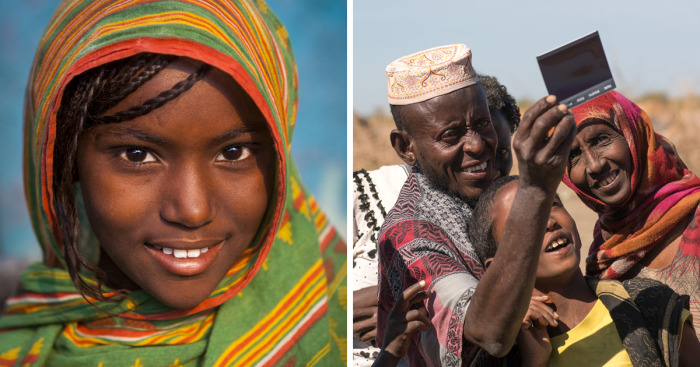
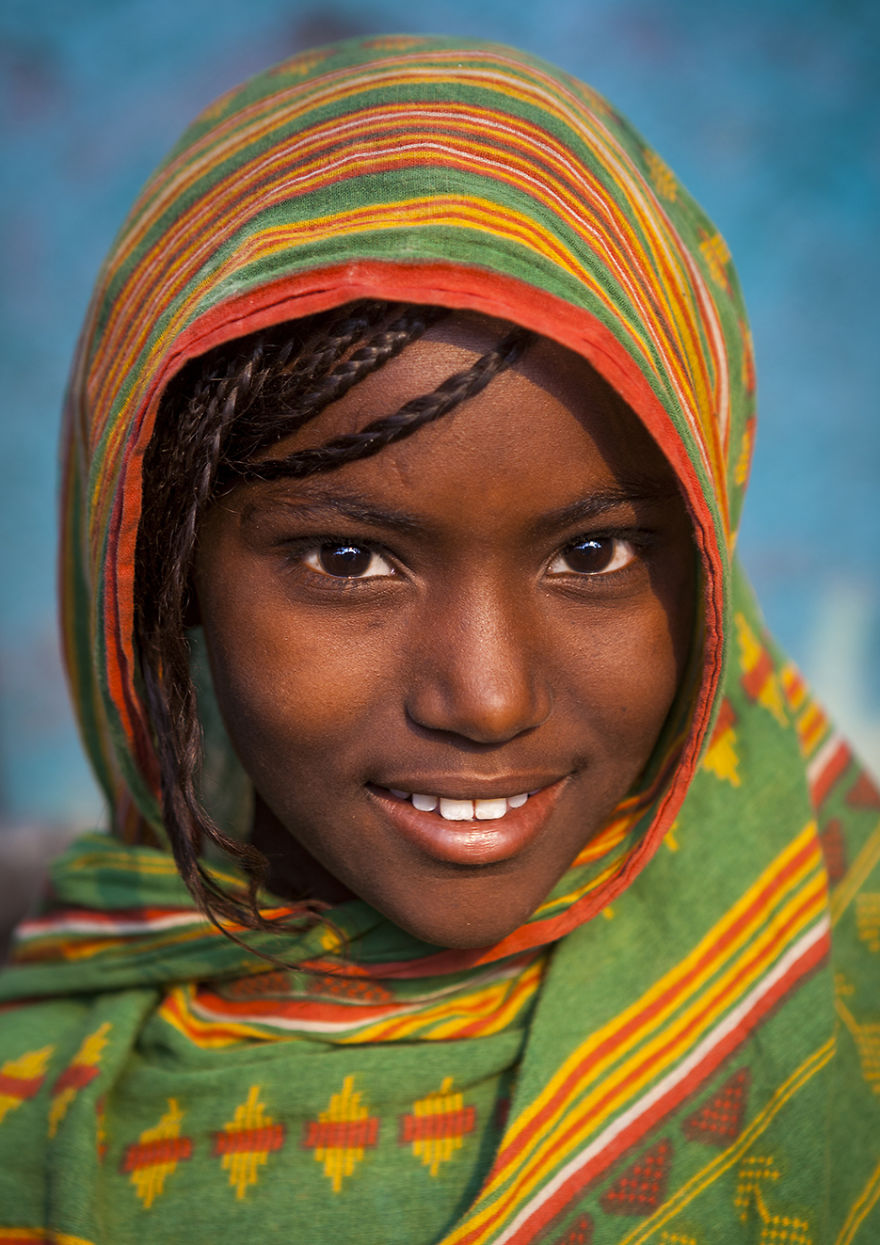
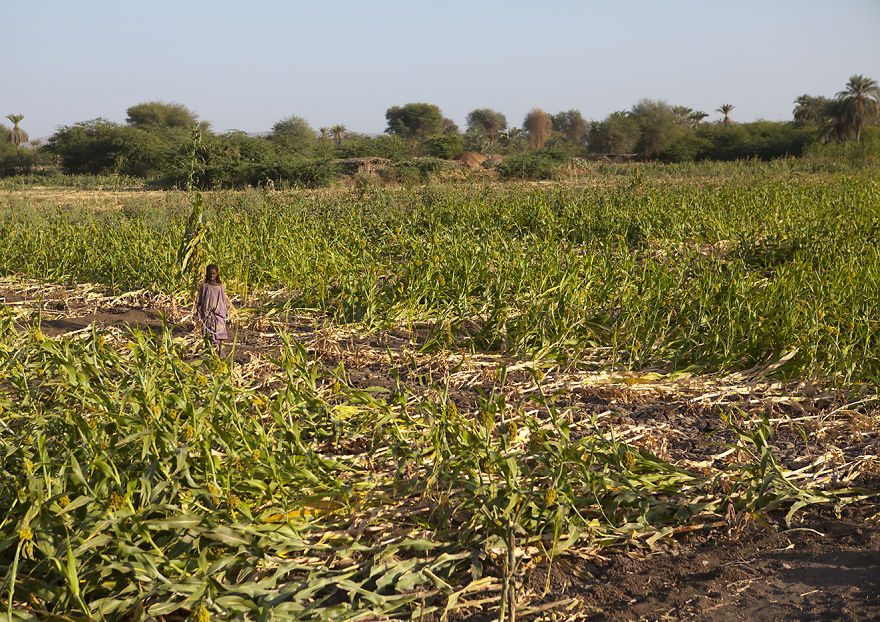
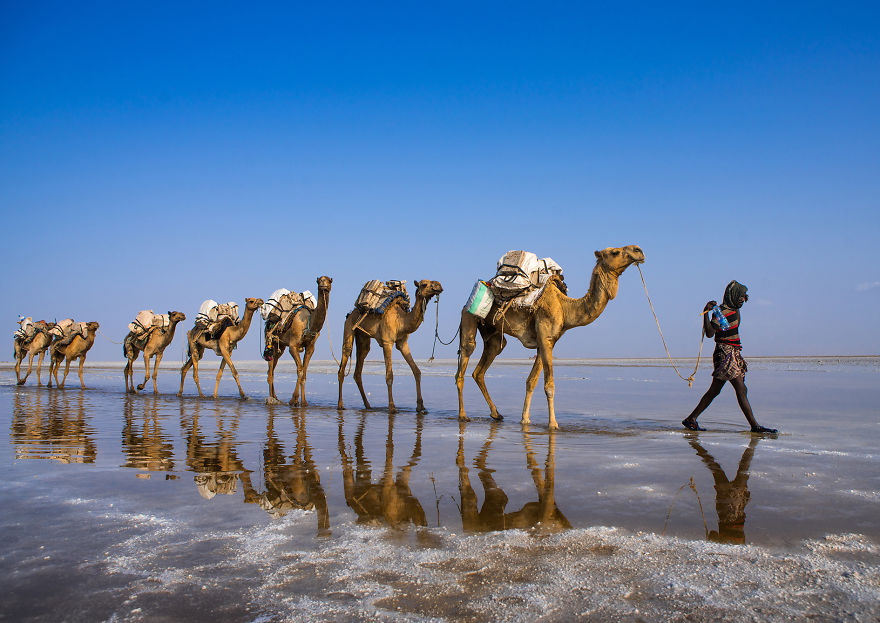
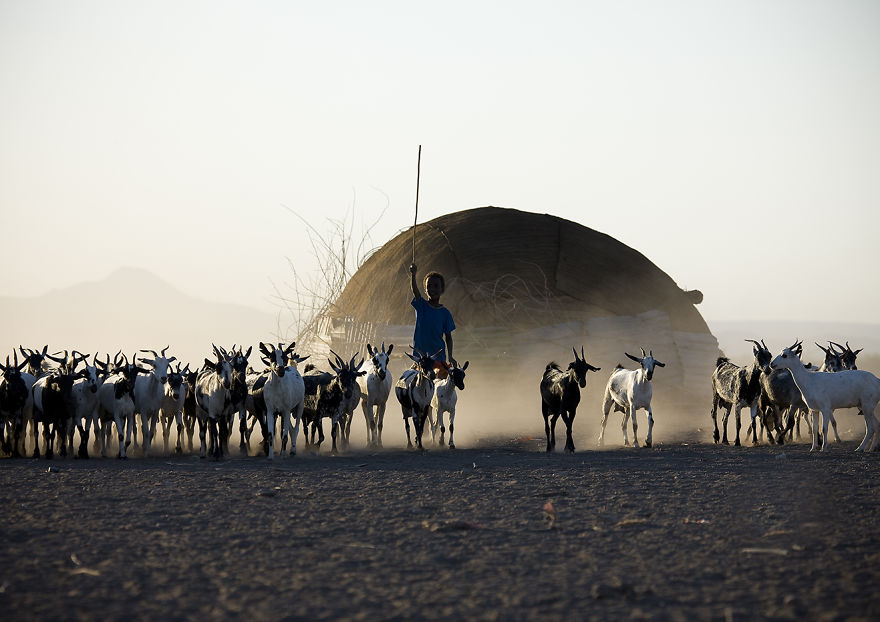
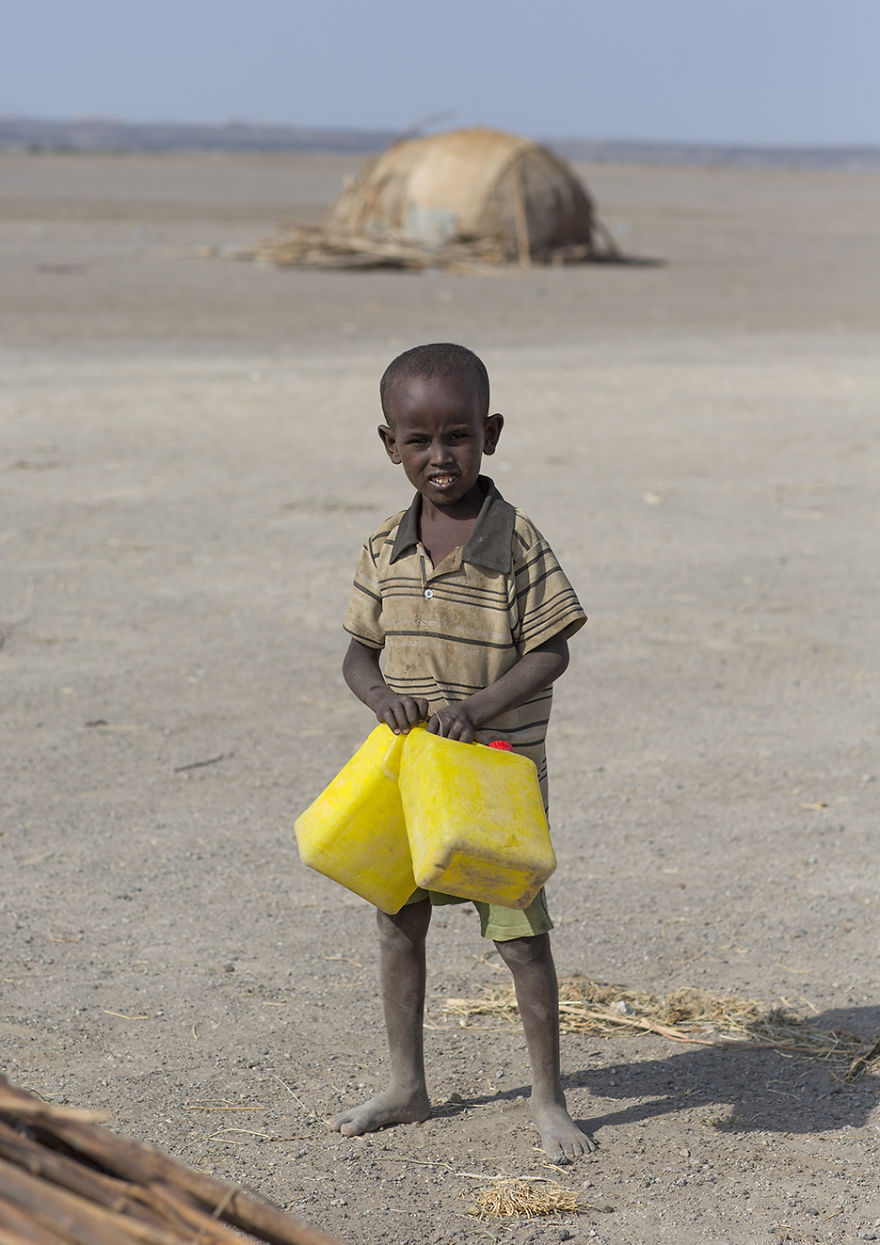
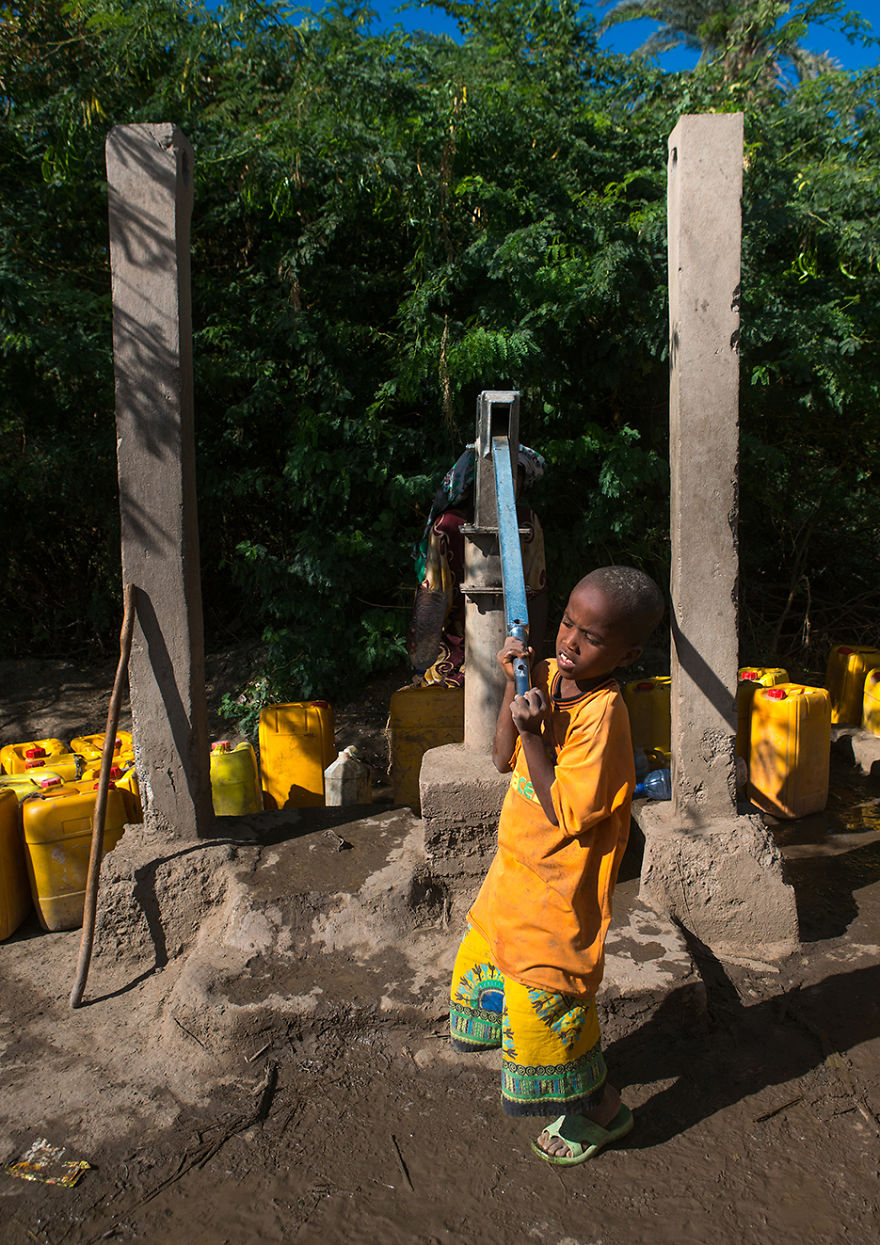
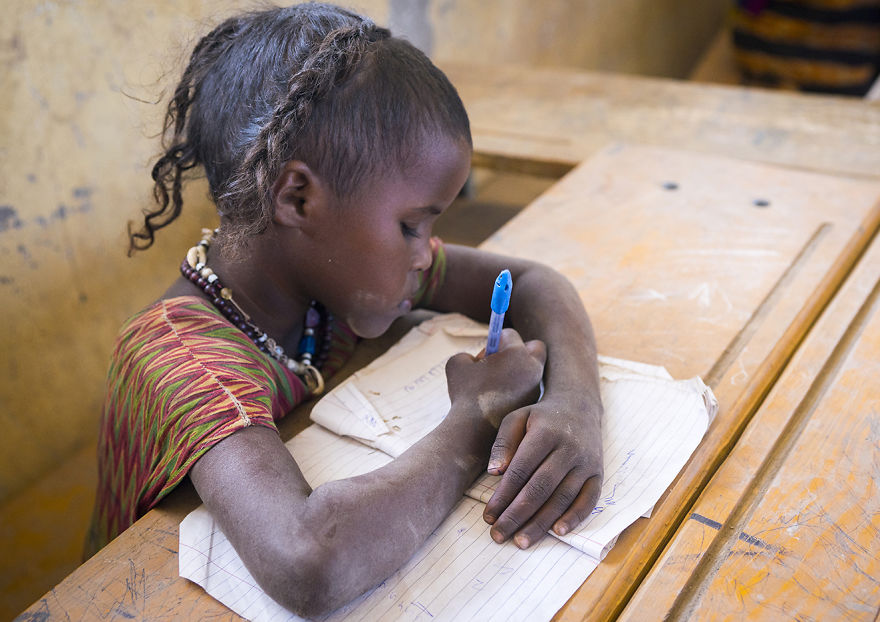
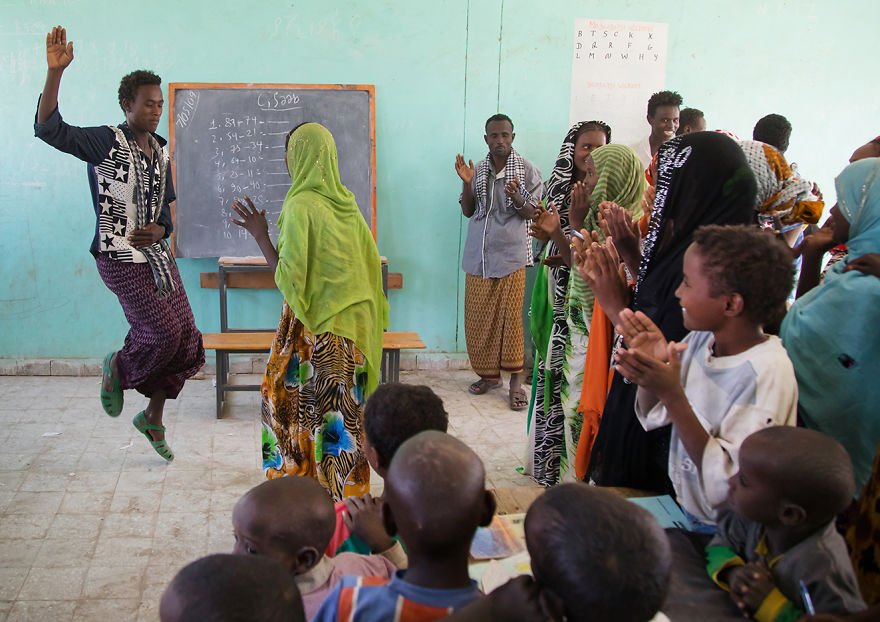
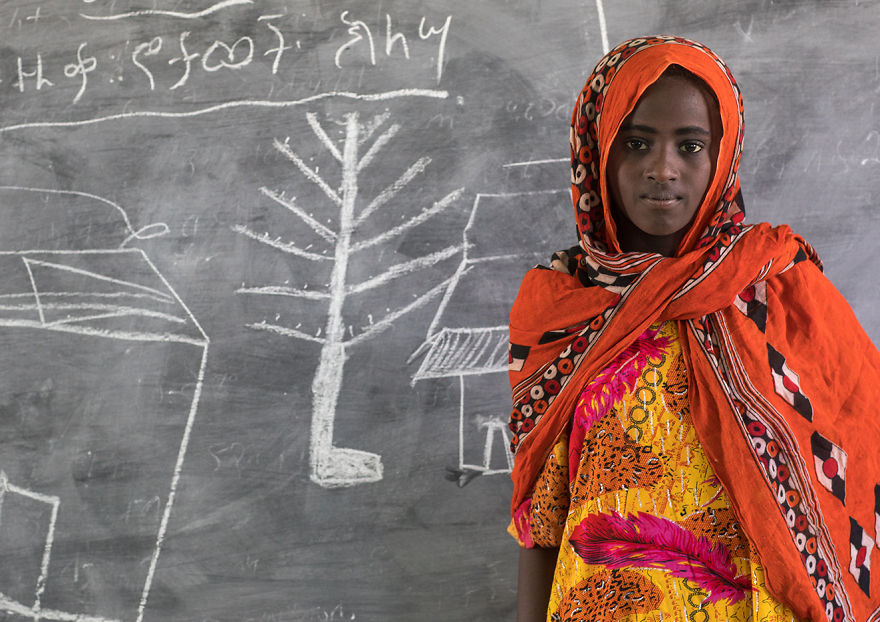
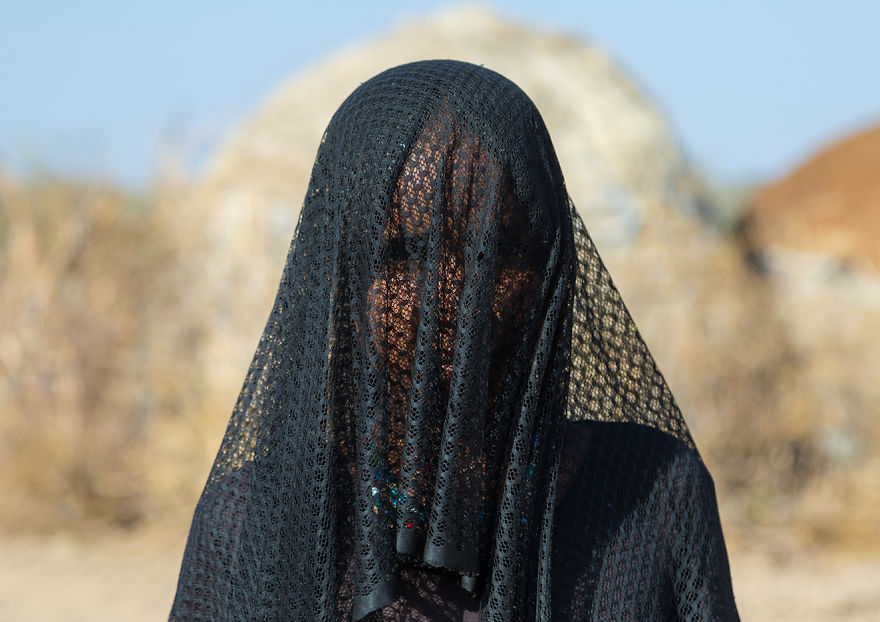
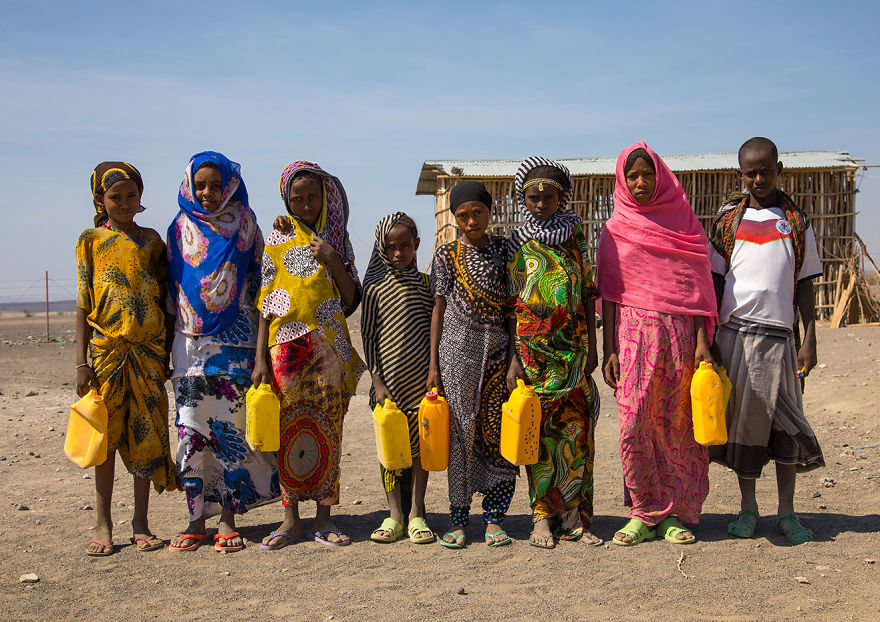
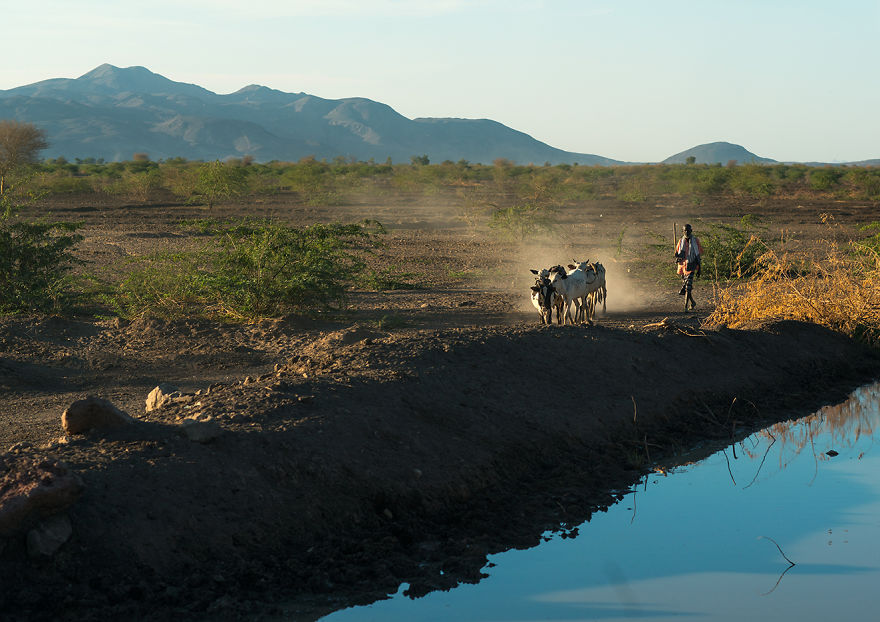
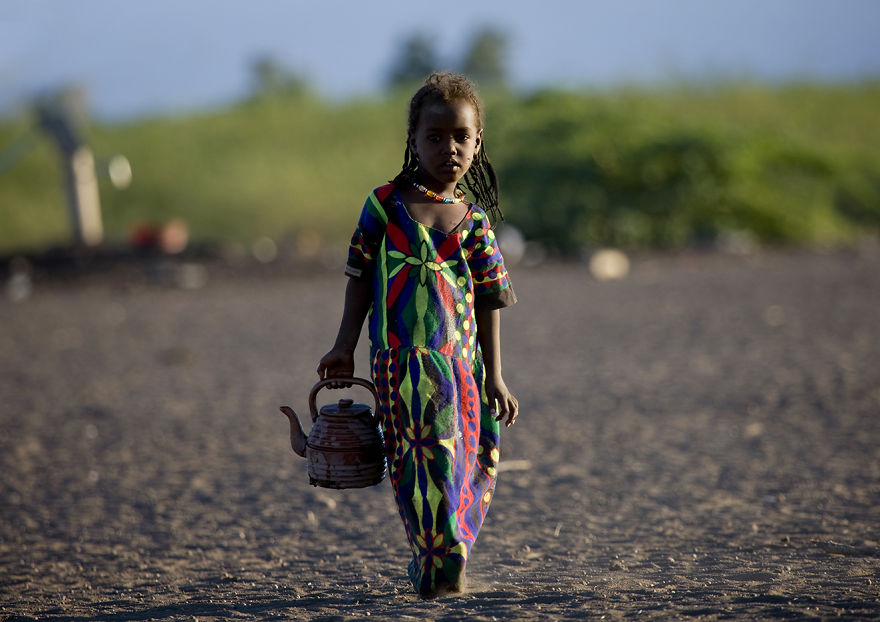
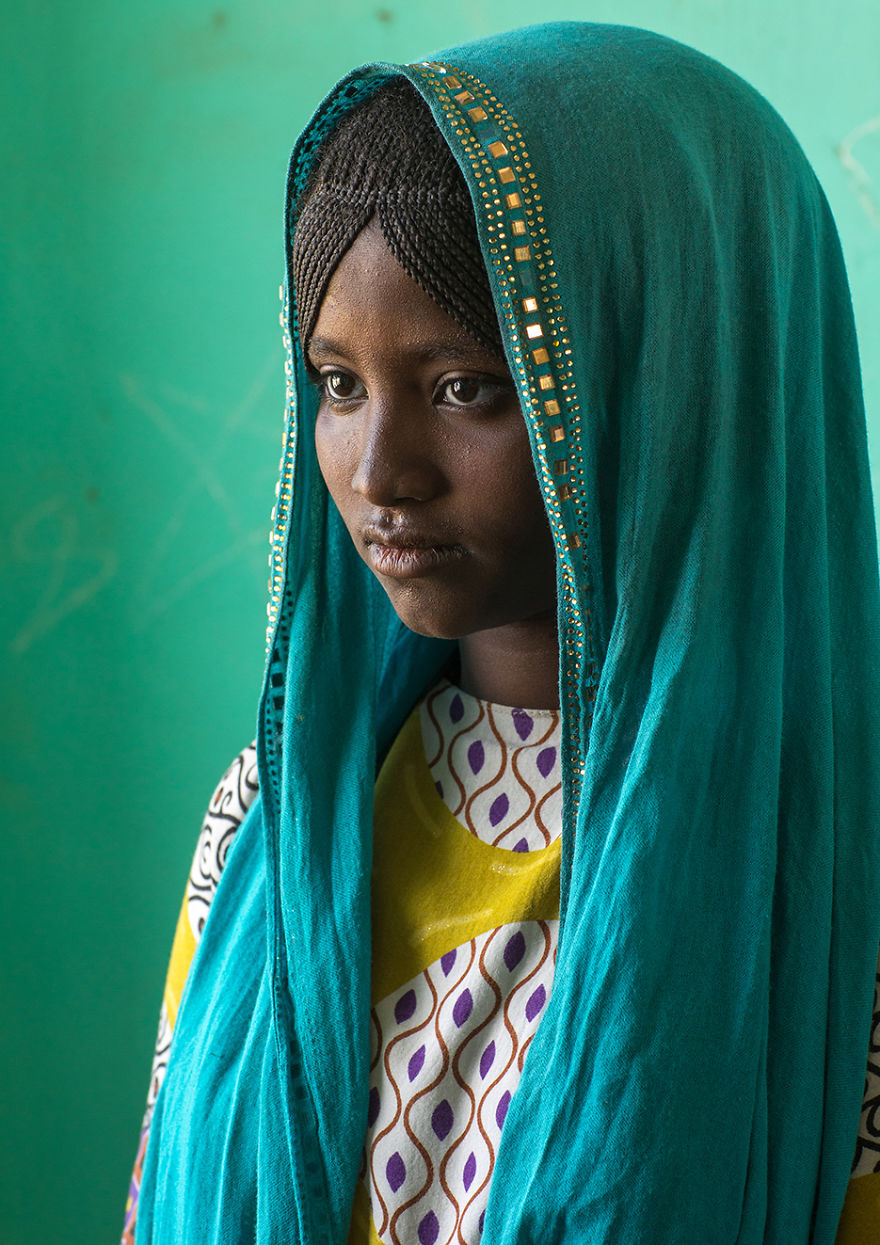
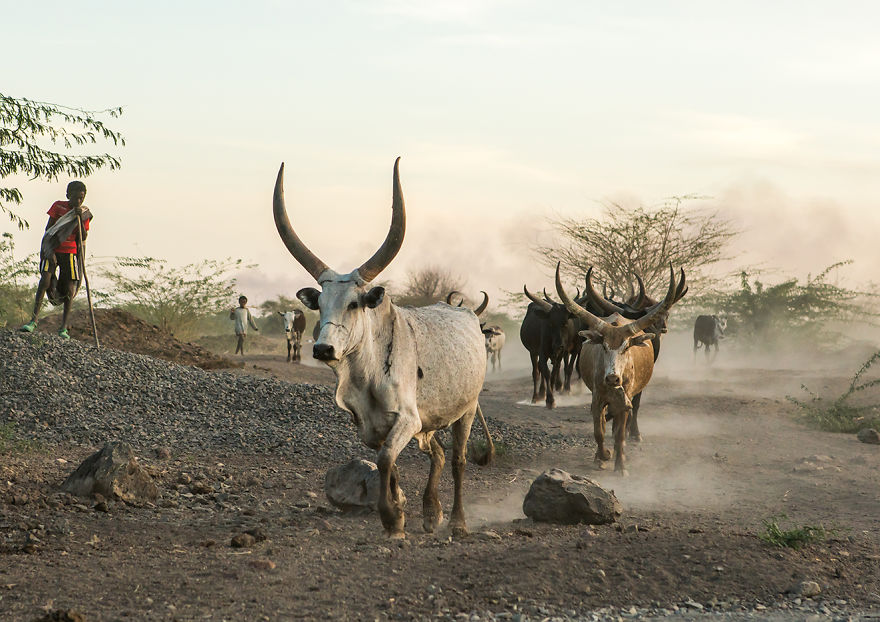
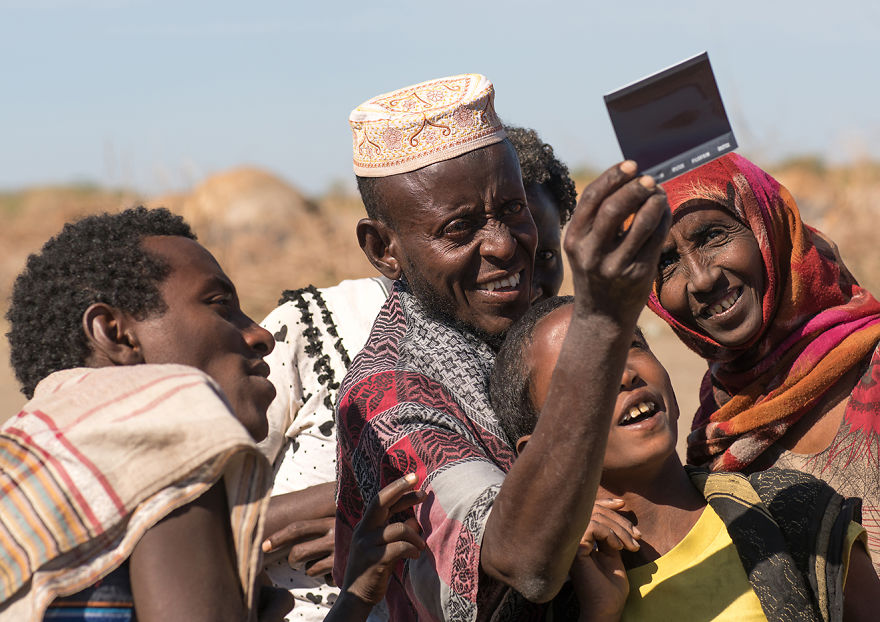



37
0